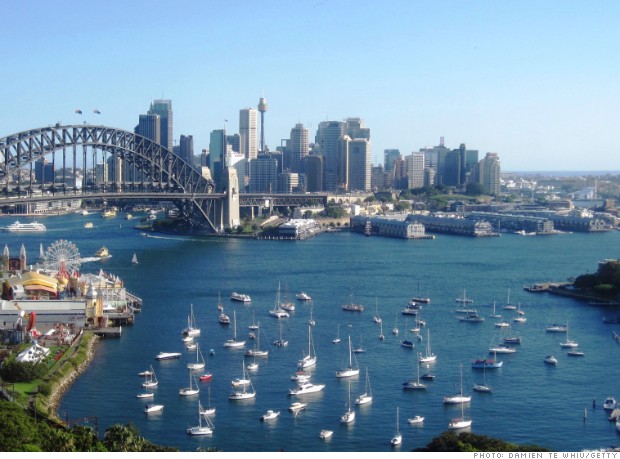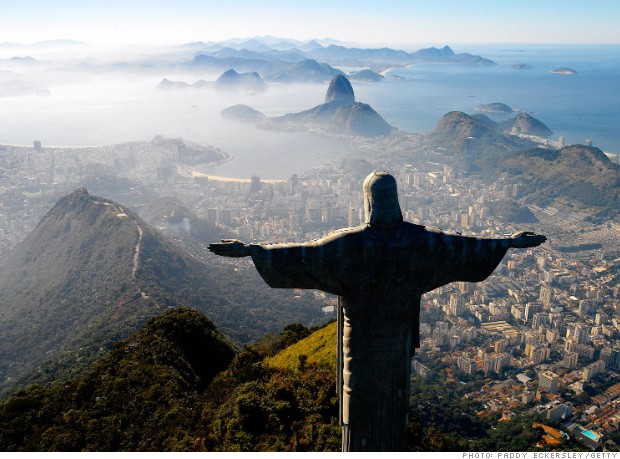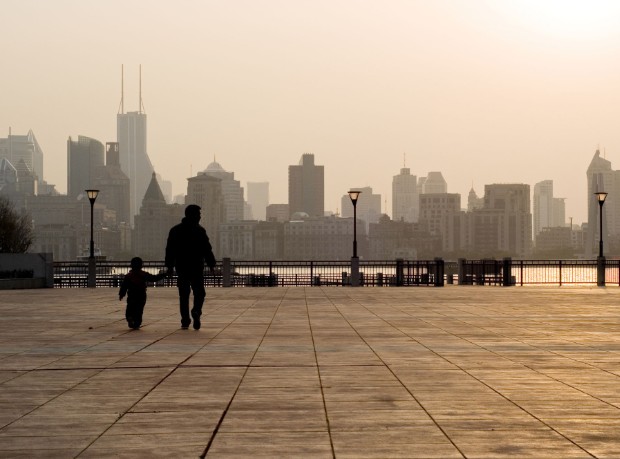Today, Erik Cavarra features an article regarding World Real Estate:
Over the past few years, we have become all too familiar with housing bubbles. When markets go bust, it gets ugly. Rapidly rising home prices in the early 2000’s got the U.S. and parts of Europe into lots of trouble; these economies slumped into recession when prices crashed. Nobody wants to relive another economic disaster, but in some parts of the world, housing markets are looking bubbly, and some fear they risk putting economies in jeopardy. Here’s a look at five markets to watch.
In the land down under, home prices are rising quickly, prompting the International Monetary Fund on Wednesday to caution that the recent surge in property prices could cause values to “overshoot.”
In Sydney, the nation’s most populous city, the average home price rose by 13% so far this year to a record $718,122. That’s higher than London, where the average is $536,236 and close to New York, where the average is $806,000.

The IMF stopped short of saying there’s a housing bubble in hot housing markets, including Melbourne and Brisbane, but urged regulators to keep a closer eye on property investments to ensure banks maintain strict lending standards.
In September, Australian central bank officials advised lenders against being too eager to offer mortgages to customers, saying record-low interest rates risked fueling a rise in speculative buying.
Brazil’s president may not think home prices have entered bubble market territory, but Noble Prize winning economist Robert Shiller has warned trouble is on the horizon.
In Brazil’s biggest cities, Sao Paulo and Rio de Janeiro, home prices have risen 188% and 230%, respectively, since January. That’s twice as fast as the growth in rent. And while the country’s mortgage market is relatively new, mortgage debt as a percentage of disposable household income has climbed to a record 15%.

Home prices have doubled in five years — something that virtually never happened in the U.S., says Shiller, a professor at Yale University who forecast the U.S. housing crisis. At an event in Brazil, on Aug. 31, he said: “I actually don’t know it’s a bubble in Brazil, but I suspect it is and, maybe if I can just say that, it would help cool the fervor.”
That’s unlikely to happen any time soon, however. Brazil’s President Dilma Rousseff has dismissed warnings and has instead changed policies to encourage demand, such as raising the price limit of houses people can buy.
Unlike Brazil, the warning signs are out in New Zealand over rising home prices. Déjà vu? Back in the early 2000s, easy credit fueled a housing bubble that eventually burst, causing the economy to dip into recession.
Ultra-low borrowing costs have helped New Zealand recover, but now they’re also helping push home prices higher. Prices in Auckland have risen by 17%, while they’re up 8% in Christchurch so far this year.
That’s bubble territory, at least according to New Zealand’s government. In October, officials tightened lending standards, giving banks less leeway in approving mortgages for buyers who can make only a small down payment.
In the world’s second-largest economy, a view by most Chinese that real estate is one of the safest investments has helped fuel a surge in home prices.
In September, prices rose at the fastest pace in almost three years, according to the latest housing data released in November. In Beijing, prices rose by 16%, Shanghai 17%, and Shenzhen 20% from a year earlier.
Many fear that bubbles are brewing within China’s housing market, but unlike the housing bubbles seen in the U.S. in the early 2000s, residential mortgage debt remains relatively low. The Chinese are big savers who often store their money in real estate vs. the stock market.
China’s government has tried to bring prices down, but they keeping going up, and officials are considering whether they should allow banks to set their own interest rates to create more competition.
Yes, that’s right. Many would think home prices are still recovering from the housing market crash in 2007, but higher prices in some parts of the U.S. have led one top Federal Reserve official to admit he is seeing fresh signs of a housing bubble.
“I’m beginning to see signs not just in my district but across the country that we are entering, once again, a housing bubble,” Dallas Fed
President Richard Fis her told reporters last month after a speech in New York. “So that leads me … to be very cautious about our mortgage-backed securities purchase program.”
her told reporters last month after a speech in New York. “So that leads me … to be very cautious about our mortgage-backed securities purchase program.”
Fisher cited rising prices in Texas and other cities and warned that the Fed’s easy money policies, which have kept mortgages rates ultra low, could be inflating asset prices. Nationwide, the median price for an existing single-family home rose by 12.5% during the third quarter from a year earlier to $207,300.
Editor’s note: A previous version of this slide incorrectly stated that the median price for a single-family home was 20,300. The correct figure is $207,300.
http://money.cnn.com/gallery/news/economy/2013/11/22/housing-bubbles.fortune/6.html


Leave a Reply